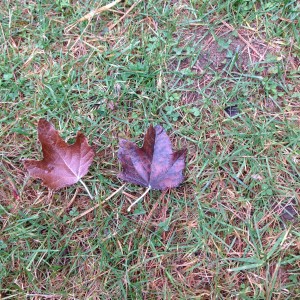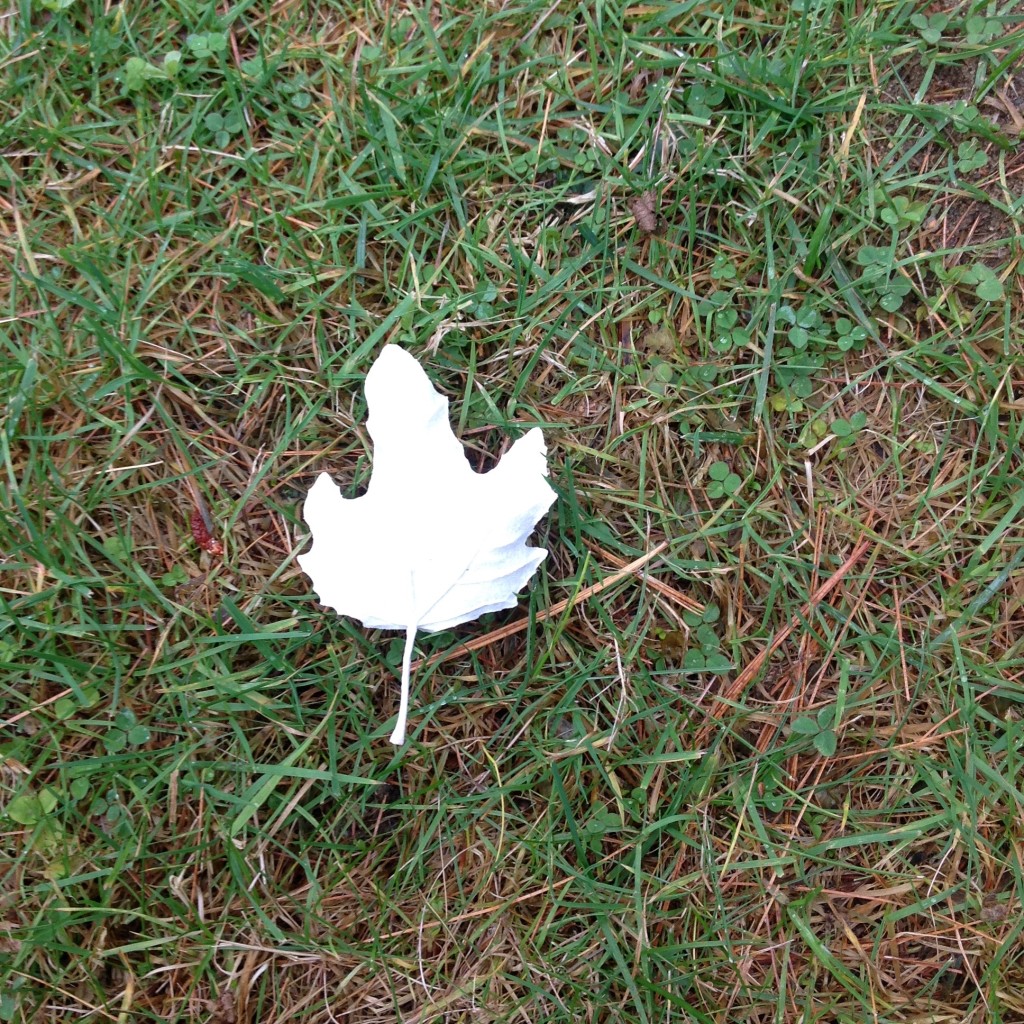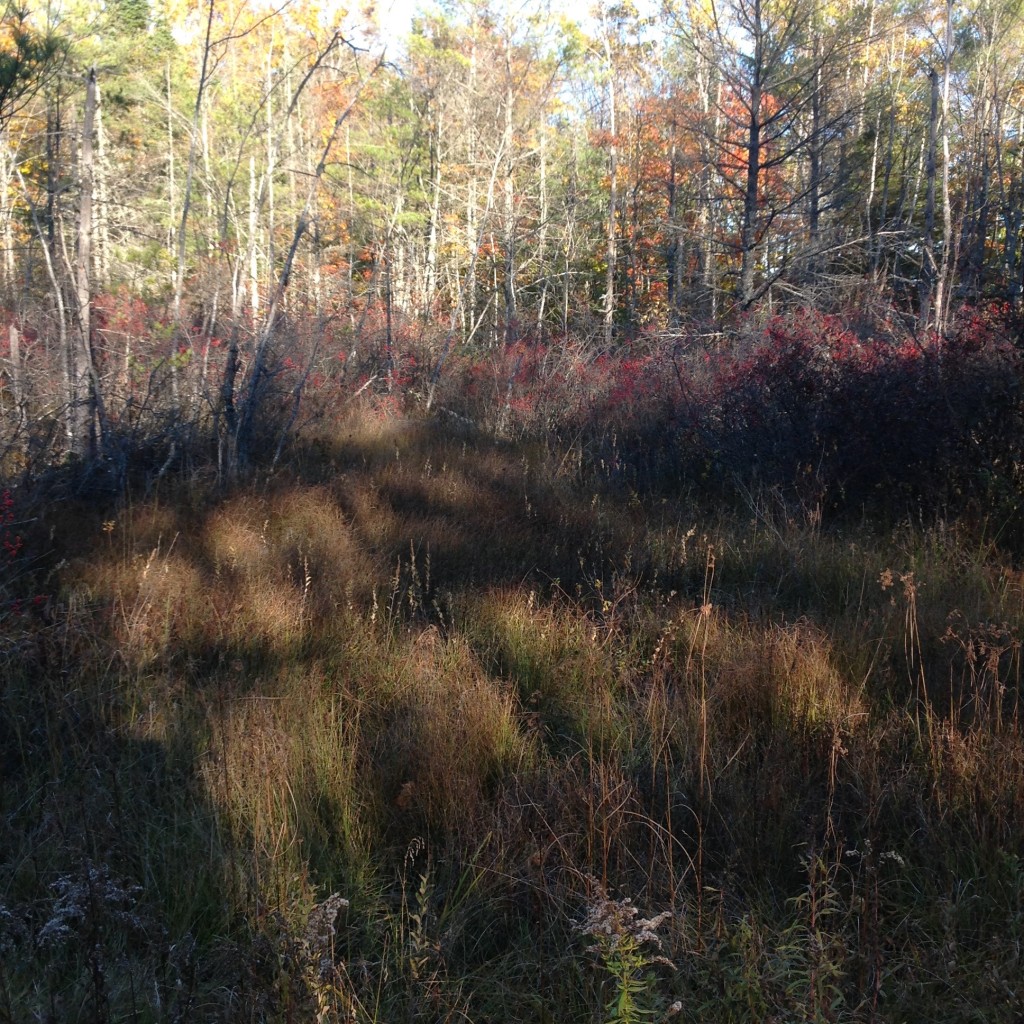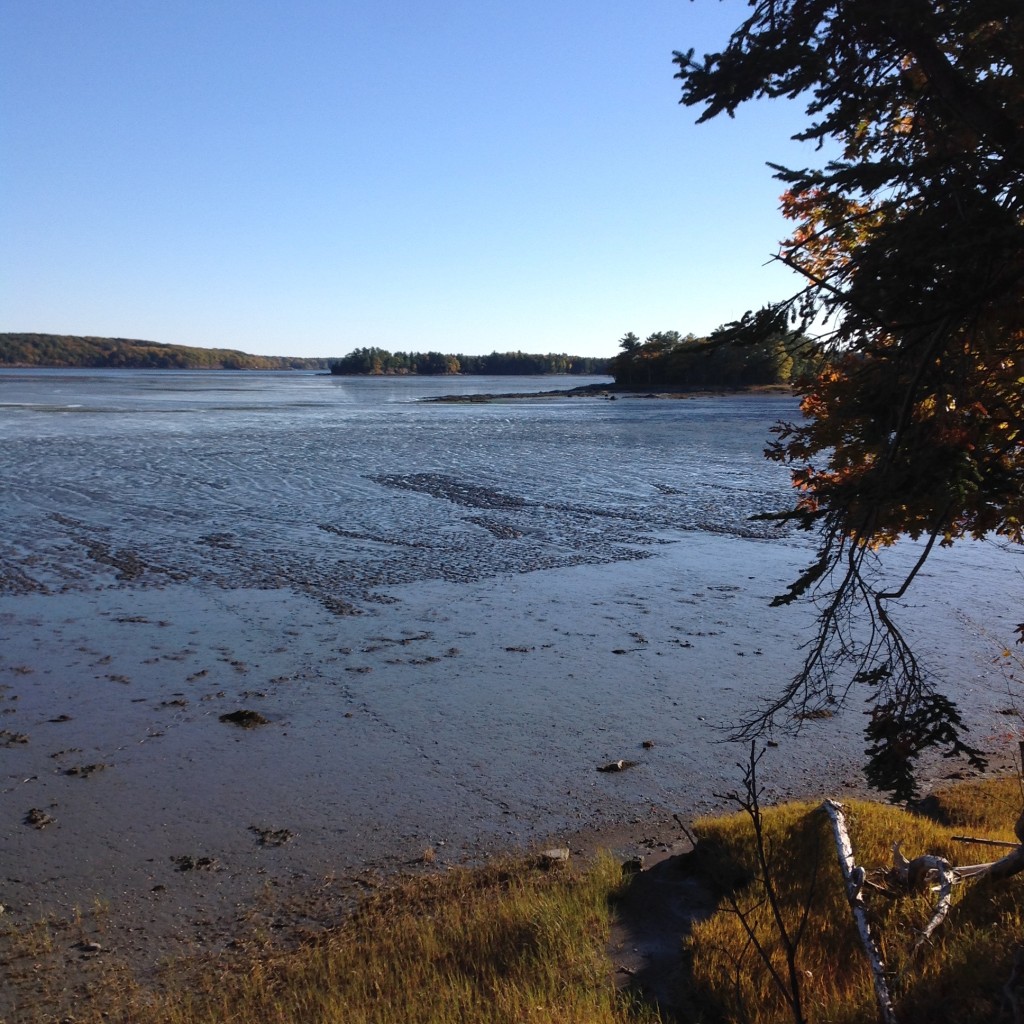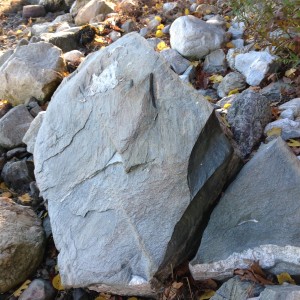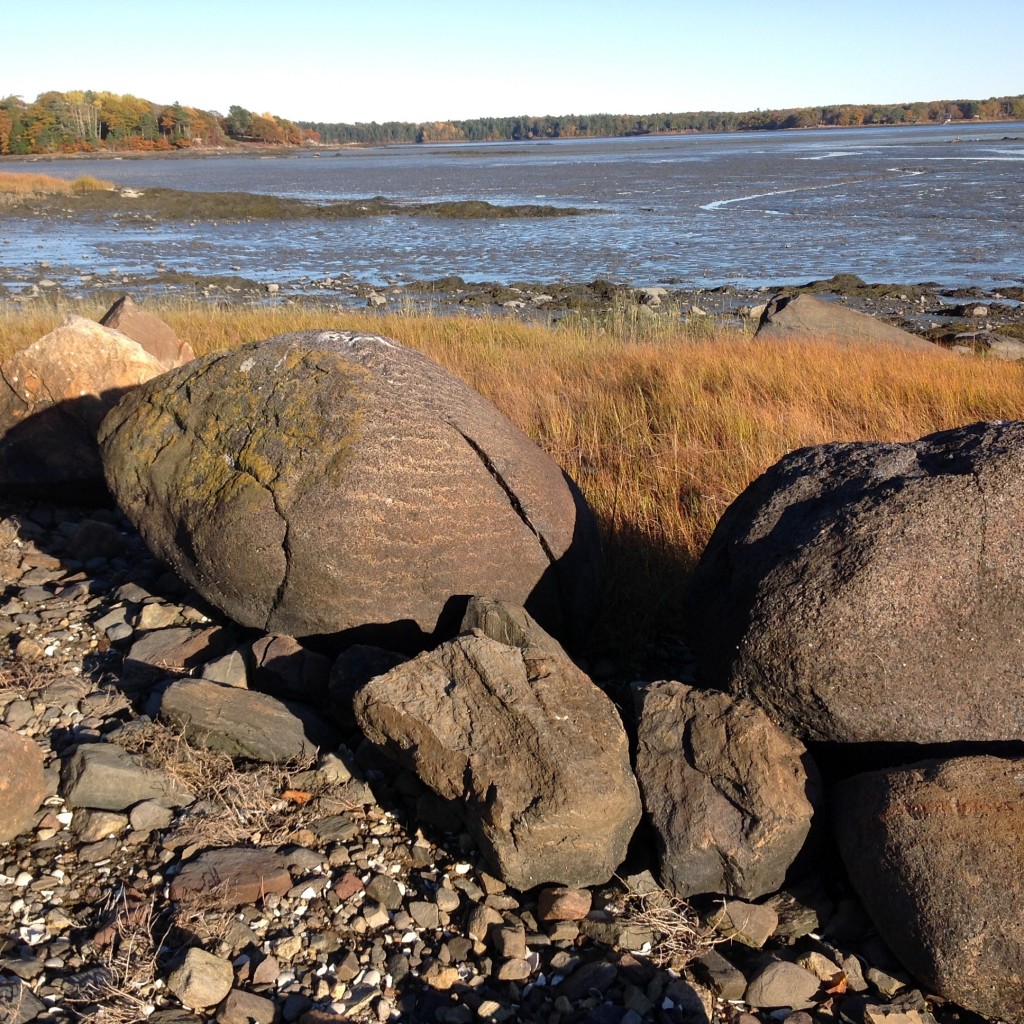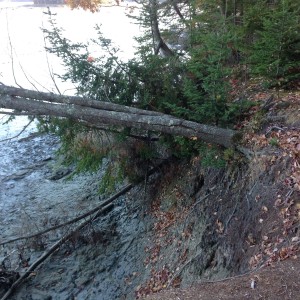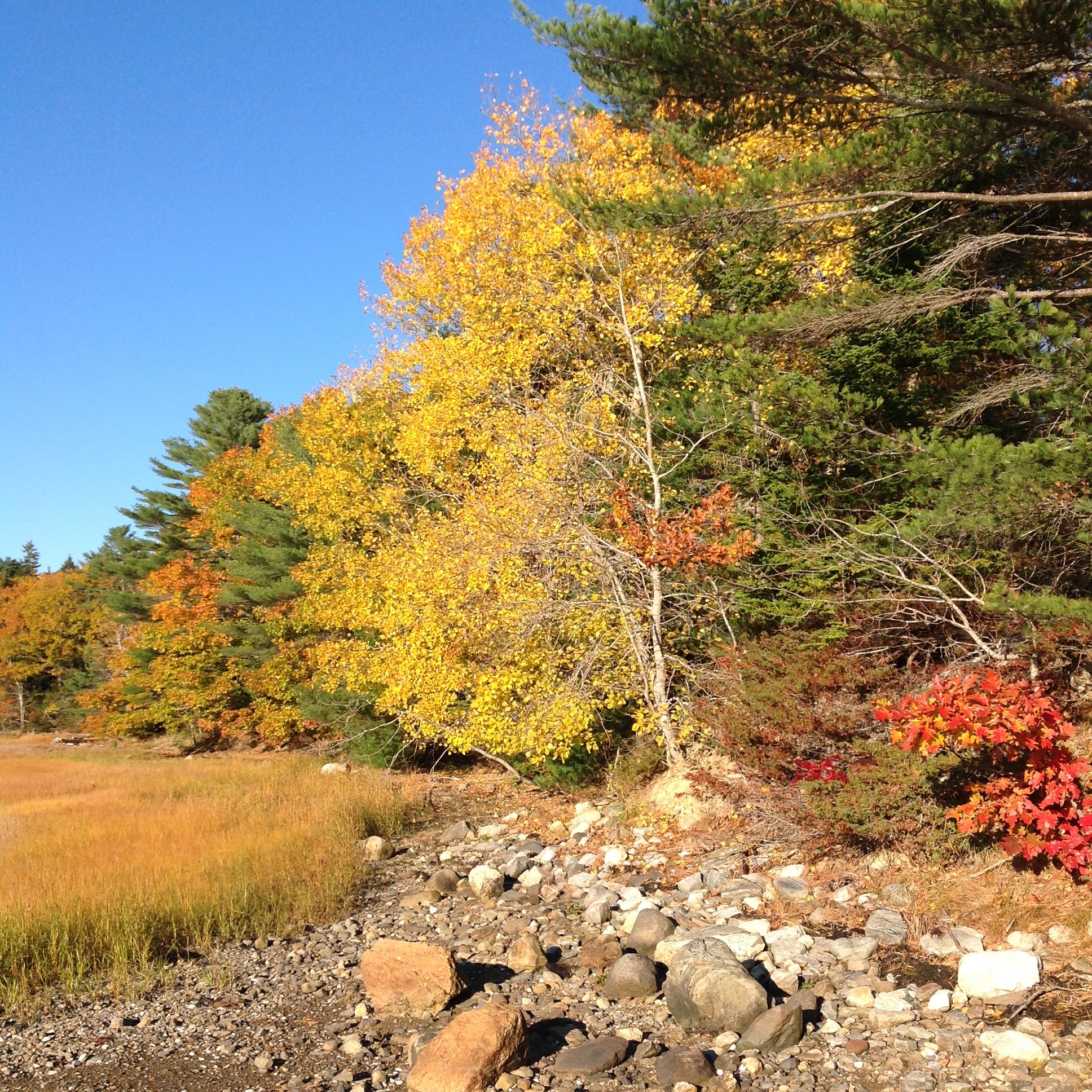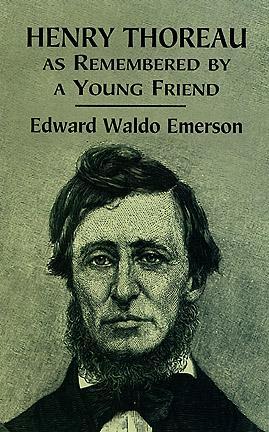“At present, these burning bushes stand chiefly along the edge of the meadows…They take you by surprise, as you are going by on one side, across the fields…” Thoreau, Autumnal Tints
A spate of frosts and winds and rains have brought down most of the oak leaves, which, even before those comings, had given up their fire for the muted season’s brown hues. In the woods the understory-evergreens are decked out in these browns; they wear them as epaulets, caps, sometimes cloaks. And yesterday, I saw a gray squirrel bearing a whole mouthful of them up tree. The bunched leaves were much bigger than his head, and, at first, I thought I’d come upon a deranged squirrel – did he really think he could re-leave the tree, turn back the season? Or, perhaps, conjure acorns from oak leaves? But then reason displaced fancy’s O, and I figured that he was really lining his winter quarters, going through the season’s checklist like any winter-wary citizen.
On the fringe of a field around a small interloping tree, I saw a mat of deep maroon speckled with what seemed, as I drew closer, to be leaf-ghosts. There, at intervals, lay outlines of the palest white. They looked like little crime-scenes chalked on a dark backdrop; once, they seemed to say, there was a leaf here.
I bent down and reached for a ghost. A little to my surprise, it came away in my hand, and when I turned it around, there was the same maroon I’d seen first, the day’s deepest color.
I carried two away to check my tree book and see if my guess – red maple – was right. And I wanted a photo of the ghost-side, which still seemed impossibly white, the white of absence itself. Or the brightest fire.


